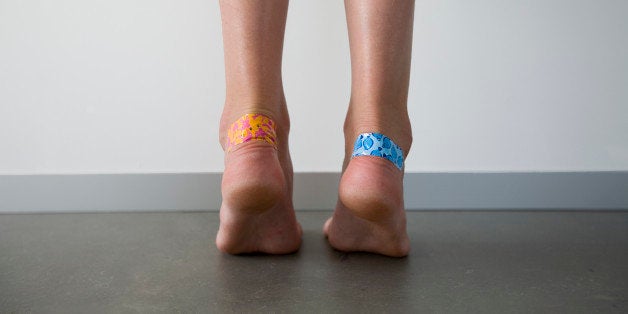
The question: Can I pop this blister -- pretty please?
The answer: Blisters are among the most common problems runners face on the regular. The good news is most will go away in just a few days. The bad news is, in the meantime, they can range from mildly annoying to brutally painful.
Blisters are caused by repetitive trauma to the skin, explains board-certified dermatologist Lauren Ploch, M.D., M.Ed., FAAD, a member of the American Academy of Dermatology. "Friction causes sheering forces on the skin that leads to mechanical separations of the skin cells," she says.
A blister typically begins as a small pink spot that tingles or burns, becoming whiter as it worsens. Then, fluid seeps into the cavity caused by the continuous friction and it becomes that familiar gelatinous bump.
That fluid should look clear, or maybe a little bit bloody. If it becomes yellow or green in hue, or the area around the blister becomes red and very painful, you may have an infection festering in that little blob and should take yourself straight to a board-certified dermatologist, says Ploch. You might also want to get a blood blister checked out if it's very dark in color in case it's a sign of something else, like shingles. In fact, she says, "if there's ever a concern that it's not just a blister," go get it checked out.
If it's another running-related blister (or you walked a little too far in uncomfortable shoes last night), your biggest concern is probably just getting rid of the thing. However, if you can, wait it out.
"Leaving a blister intact is always best," says Ploch. She does acknowledge that military personnel or marathon runners can't always stop what they're doing and see a derm, so in some cases she says the occasional popping of a blister is OK, especially if the fluid inside is causing noticeable pressure.
To do so, pierce the side of the blister with a sterile needle, which allows the fluid to seep out and that bulge to deflate. Leave as much of the skin intact as possible; this provides a "natural bandage" for your sore skin, she says. If the blister has popped on its own, and you're on clean-up duty, create as much of a barrier as possible with the torn skin that remains, clean the area every day (soap and water will do just fine) and cover it with a bandage.
People with suppressed immune systems or a history of health conditions, like heart disease and diabetes, should not take their blister-popping into their own hands, she says, and should consult a medical professional instead.
Then, try not to get one next time. Damp, warm skin is most prone to blisters, so there's probably no way to save your sweaty feet completely, but there are some possible protective measures. "The best tip is to avoid ill-fitting shoes and to avoid repetitive trauma in those shoes," she says. Breaking in new shoes can help, as can thicker, sweat-wicking socks -- but keep in mind that socks that lose their shape also put your feet at risk for blisters. Powdering up your socks or shoes, warns Ploch, may only lead to more irritation, as clumps of moistened powder could cause blisters themselves.
Have a question for Healthy Living? Get in touch here and we'll do our best to ask the experts and get back to you.
"Ask Healthy Living" is for informational purposes only and is not a substitute for medical advice. Please consult a qualified health care professional for personalized medical advice.
